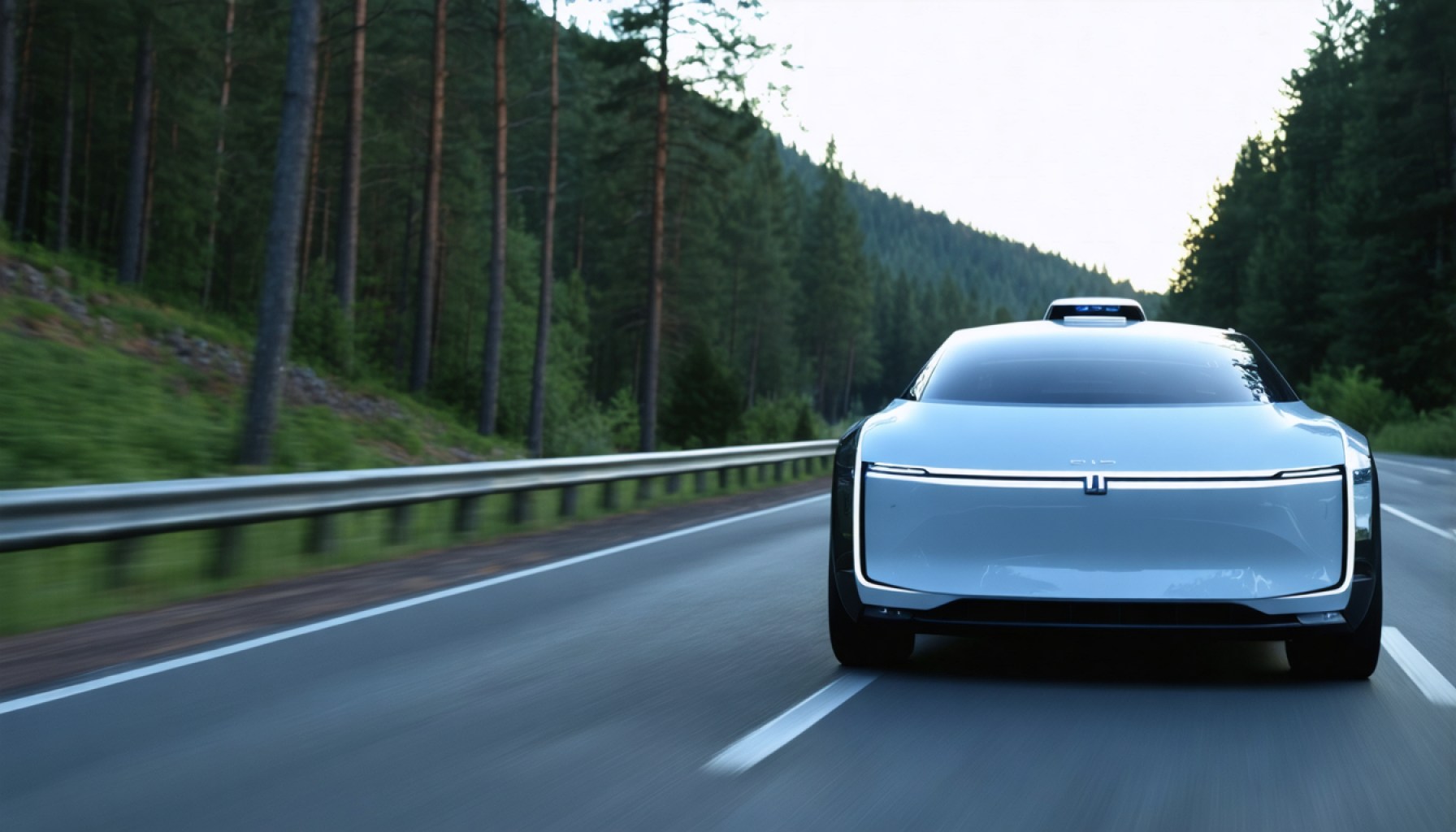- Autonomous cars leverage AI and advanced sensors to transform commuting and infrastructure.
- They promise reduced traffic congestion and fewer accidents, enhancing transportation efficiency.
- Improved connectivity between vehicles and smart city infrastructures optimizes traffic flow and cuts emissions.
- Public trust remains a challenge due to safety concerns and past incidents, despite positive safety statistics.
- Autonomous cars hold potential for increased independence for the elderly and disabled.
- The shift could impact urban planning by reducing the need for parking lots, enabling more space for parks and businesses.
- The success of autonomous vehicles depends on societal acceptance and adaptation to new technologies.
- Cautious optimism surrounds the future of transportation, balanced between innovation and public perception.
A sleek, silver vehicle glides effortlessly down a bustling city street. In its cabin, an empty driver’s seat stares back at you—a testament to the technological revolution unfolding before our eyes. Autonomous cars, those enigmatic creations of modern engineering, promise to upend traditional driving in ways many are only beginning to comprehend.
These futuristic vehicles, built on the shoulders of advanced artificial intelligence and cutting-edge sensors, aim to transform daily commutes, city infrastructures, and even our environment. Imagine a world where traffic congestion no longer dictates our schedules, where the tragic clamor of car accidents is relegated to history books. The potential is immense, yet the road to ubiquitous adoption teems with challenges.
Highway traffic, a perennial headache, sees relief thanks to autonomous vehicles’ ability to communicate with each other. In this car-talk world, these brainy machines deliver synchronized speeds and impeccable lane management, painting a picture of transportation harmony. The connectivity doesn’t stop at vehicles; it extends to infrastructures as well. Smart cities of tomorrow are envisioned with traffic lights adapting dynamically to live traffic patterns, reducing wait times and cutting emissions in a dance of efficiency.
However, adoption faces a formidable adversary—public trust. Many ferry reservations are held in the hands of safety concerns. While companies like Tesla and Waymo showcase impressive safety statistics, consumer comfort remains pivotal. Public perception, marred by high-profile incidents and negative press, slowly mends as improvements continue to unfold.
A critical strength of autonomous cars lies in their potential to democratize commuting. For the elderly and disabled, these cars promise newfound independence, offering freedom through unassisted transportation. Moreover, the potential reduction in reliance on traditional vehicles holds ramifications for urban planning; fewer personal vehicles translate to fewer parking lots, potentially opening space for parks, homes, and businesses.
A crucial takeaway emerges: while the autonomous car revolution is not without its bumps, its promise far outweighs the hurdles. Acceptance and adaptation hinge not merely on technological prowess but on society’s willingness to embrace innovation—an echo of our continuous strive toward progress.
As these driverless wonders continue to evolve and impress, one cannot help but anticipate a future where the idea of manually steering a vehicle evokes nostalgia. Until then, the road ahead remains one of cautious optimism, guided by the dual headlights of technological advancement and societal adaptation.
The Future of Transportation: How Autonomous Cars Will Revolutionize Our Lives
The Evolution of Autonomous Cars
Autonomous vehicles, hailed as harbingers of change, are gearing up to reshape our transportation landscape. Beyond their obvious allure, these advanced machines offer insights into a smarter, more connected future.
New Insights: Beyond Basic Benefits
1. Environmental Impact
According to a study by the University of Michigan, autonomous vehicles could potentially reduce fuel consumption by up to 12% through optimized driving patterns and reduced idling times. In addition, widespread adoption of electric autonomous vehicles can further decrease greenhouse gas emissions, providing a vital step toward combatting climate change.
2. Economic Implications
Autonomous vehicles may significantly impact the job market. While they promise efficiency, they also pose challenges for industries reliant on human drivers, such as trucking and transit. However, they also open up new avenues for tech development, maintenance, and smart infrastructure.
3. Legal and Ethical Considerations
The introduction of autonomous cars has sparked debates over liability in accidents involving autonomous technology. Legal frameworks are gradually developing, with certain states in the U.S. like California and Arizona leading the way in testing and regulation. Ethical considerations, such as decision-making in unavoidable accidents, require ongoing deliberation.
Real-World Use Cases & Industry Trends
– Ride-Hailing Services: Companies like Uber and Lyft are investing heavily in autonomous fleets, signaling a shift towards automated ride-hailing services that promise cheaper, more accessible options.
– Public Transportation: Autonomous buses and shuttles are being tested in cities worldwide, presenting a solution to reduce congestion and extend public transit to underserved areas.
How to Embrace the Autonomous Future
1. Stay Informed: Follow updates from leading companies like Waymo and Tesla to stay ahead of technological advancements and safety protocols.
2. Advocate For Infrastructure: Engage with local policymakers to promote the development of infrastructure that supports autonomous vehicles, such as smart traffic lights and dedicated lanes.
3. Consider Adaptations in Skills: As technology shifts, seek opportunities to learn skills relevant to the growing field of autonomous vehicles, like AI programming and data analysis.
Safety and Security
– Ensuring cybersecurity is a top priority, with manufacturers investing heavily in safeguarding autonomous driving systems against malicious attacks.
– For personal safety, consumers are advised to stay informed about vehicle software updates and adhere to manufacturer guidelines for safe operation.
Pros & Cons Overview
Pros:
– Enhanced safety through reduced human error.
– Improved traffic flow and reduced congestion.
– Increased accessibility for non-drivers.
Cons:
– High initial cost and necessary investment in infrastructure.
– Potential job displacement in driving-related sectors.
– Ongoing need for public trust and acceptance.
Conclusion and Quick Tips
The road to autonomous vehicles requires careful navigation of technical, legal, and ethical landscapes. For consumers, the focus should be on staying informed, advocating for necessary societal adaptations, and embracing the potential for a safer, more efficient future.
For further insights into the evolving world of autonomous vehicles, visit Waymo or Tesla for the latest updates and innovations.
